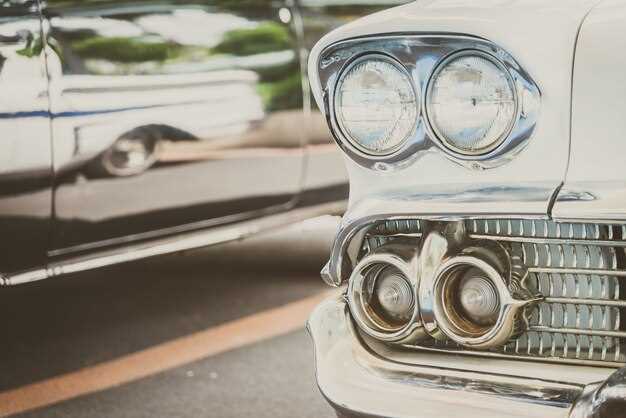
The world of classic cars has seen a notable rise in interest, particularly in the domain of Japanese Domestic Market (JDM) vehicles. As collectors and enthusiasts increasingly seek to own a piece of automotive history, understanding the pricing trends for JDM classic cars becomes essential for both buyers and sellers. These vehicles, once exclusive to the Japanese market, are now sought after globally for their unique design, engineering excellence, and cultural significance.
Evaluating the pricing of JDM classic cars involves examining factors such as rarity, condition, and the popularity of specific models. Iconic vehicles like the Nissan Skyline GT-R, Mazda RX-7, and Toyota Supra have drawn significant attention, driving demand and influencing their market value. This article delves into the various elements that contribute to the market value of these classic cars, offering insights for potential investors and enthusiasts alike.
Furthermore, the landscape of JDM classics is constantly evolving, with market dynamics influenced by collector preferences and economic conditions. Understanding these shifts is crucial for making informed decisions. Whether you are contemplating a purchase or looking to appraise your collection, this exploration of market value insights will provide valuable information to navigate the world of JDM classic cars.
Analyzing Price Trends in the JDM Classic Car Market

The JDM (Japanese Domestic Market) classic car scene has gained significant traction over recent years, manifesting a distinct evolution in pricing dynamics. Understanding these price trends is essential for enthusiasts, collectors, and investors alike who seek to navigate this specialized market effectively.
Initially, the demand for JDM vehicles, particularly those built during the 1980s and 1990s, surged due to their unique designs, performance characteristics, and the nostalgia associated with the era. Models like the Nissan Skyline GT-R and the Mazda RX-7 have become iconic, driving prices upward as enthusiasts value rarity and performance over time.
In recent years, auction results have demonstrated a robust appreciation trend among top-tier JDM vehicles. Collectible models have shown an average annual price increase ranging from 5% to 15%, depending on their condition, mileage, and modifications. The introduction of online auctions and global marketplaces has broadened the audience, enhancing competition and further pushing prices higher.
Certain factors significantly influence these price trends. For instance, scarcity plays a pivotal role; limited production models or those with unique specifications often fetch substantial premiums. Furthermore, the cultural impact of JDM vehicles, bolstered by media portrayals and modifications seen in the tuning scene, has perpetuated interest among younger generations, thereby creating a sustained demand that continues to impact market values.
Market fluctuations are also evident based on the economic climate and trends in the automotive industry. As electric vehicles gain traction, traditional combustion engine vehicles, including JDM classics, may experience renewed interest as enthusiasts seek to preserve a piece of automotive history. The potential for these cars to be viewed as investments is a driving force behind their increasing value.
Another critical aspect to consider is the ongoing regulatory environment. Stricter emissions laws and import regulations can affect the availability of certain models, consequently altering market valuations. Cars that qualify for exemptions or are viewed as ‘timeless’ may maintain their value better than others facing compliance issues.
In summary, analyzing the price trends of JDM classic cars reveals a landscape marked by both growth and variability. Conducting thorough research and staying informed about market conditions will empower collectors and enthusiasts to make educated decisions in this vibrant and evolving automotive sector.
Factors Influencing JDM Classic Car Valuation
The valuation of JDM classic cars is influenced by a multitude of factors, each playing a significant role in determining market prices. One of the primary aspects is the car’s rarity. Limited production models, especially those that were only available in Japan, are often considered more valuable due to their exclusivity.
Condition is another critical factor. Cars that have been meticulously maintained or restored to their original specifications generally command higher prices. Original parts, paint, and interiors add to their appeal and valuation, while modifications can either enhance or detract from a vehicle’s worth, depending on the buyer’s preferences.
The model and brand also significantly impact valuation. Iconic models from manufacturers like Nissan, Toyota, and Honda have a loyal following among enthusiasts, which can drive up demand and, consequently, prices. Features such as performance capabilities, technological advancements, and design elements contribute to a model’s desirability.
Market trends and demand cycles play a vital role in JDM valuation. As interest in JDM cars has escalated in recent years, driven by cultural influences and film appearances, certain models have seen significant price hikes. The demographic of potential buyers, including younger collectors versus older enthusiasts, influences which cars are more sought after.
Provenance is equally important. A documented history of ownership or notable previous owners can enhance a vehicle’s value. Specific milestones in a car’s life, such as participation in races or shows, add to its story and desirability.
Lastly, economic factors, including the broader automotive market health and the currency exchange rates for importing JDM cars, can dramatically affect valuations. Fluctuations in disposable income among collectors also lead to altering price dynamics in the JDM classic car market. Understanding these factors is crucial for both buyers and sellers in making informed decisions regarding JDM classic car transactions.
Comparative Pricing: JDM Classics vs. Domestic Classics

The market for classic cars has seen a significant evolution in pricing, particularly between Japanese Domestic Market (JDM) classics and domestic classics from countries such as the United States. Understanding the comparative pricing of these two segments can provide valuable insights for collectors and enthusiasts alike.
When evaluating pricing, several factors come into play:
- Model Rarity: Some JDM classics, such as the Nissan Skyline GT-R and Toyota Supra, command higher prices due to their limited production and iconic status. Conversely, while certain domestic classics can be rare, many models have been mass-produced, leading to more accessible pricing.
- Condition and Restoration: Both JDM and domestic classics can vary significantly in price based on their condition. Well-restored examples typically fetch higher prices. JDM models that have been properly imported and maintained often see appreciation due to niche interest.
- Market Demand: Recently, JDM classics have surged in popularity, driving prices upward. The desirability of models like the Honda Civic Type R and Mazda RX-7 has resulted in competitive pricing compared to their domestic counterparts, which may experience fluctuations based on collector trends.
- Availability: Domestic classics are generally more available in the US market due to local production, making them more affordable. In contrast, JDM classics can be rarer, especially in regions where import regulations limit supply.
As a result of these factors, pricing can vary widely:
- Entry-level JDM classic cars can start from $10,000, while similar domestic models might be available from $5,000.
- Mid-tier JDM vehicles can average between $20,000 to $50,000 depending on condition and demand, whereas domestic classics can range from $15,000 to $35,000.
- High-end JDM collector models can exceed $100,000, with certain iconic examples achieving prices well beyond that, while top-tier domestic classics usually cap around $80,000.
In summary, the pricing landscape reveals distinct differences between JDM classics and domestic classics. While both markets offer unique value, the growing appeal of JDM vehicles may lead to increased competition and prices that reflect their cultural significance and rarity.




